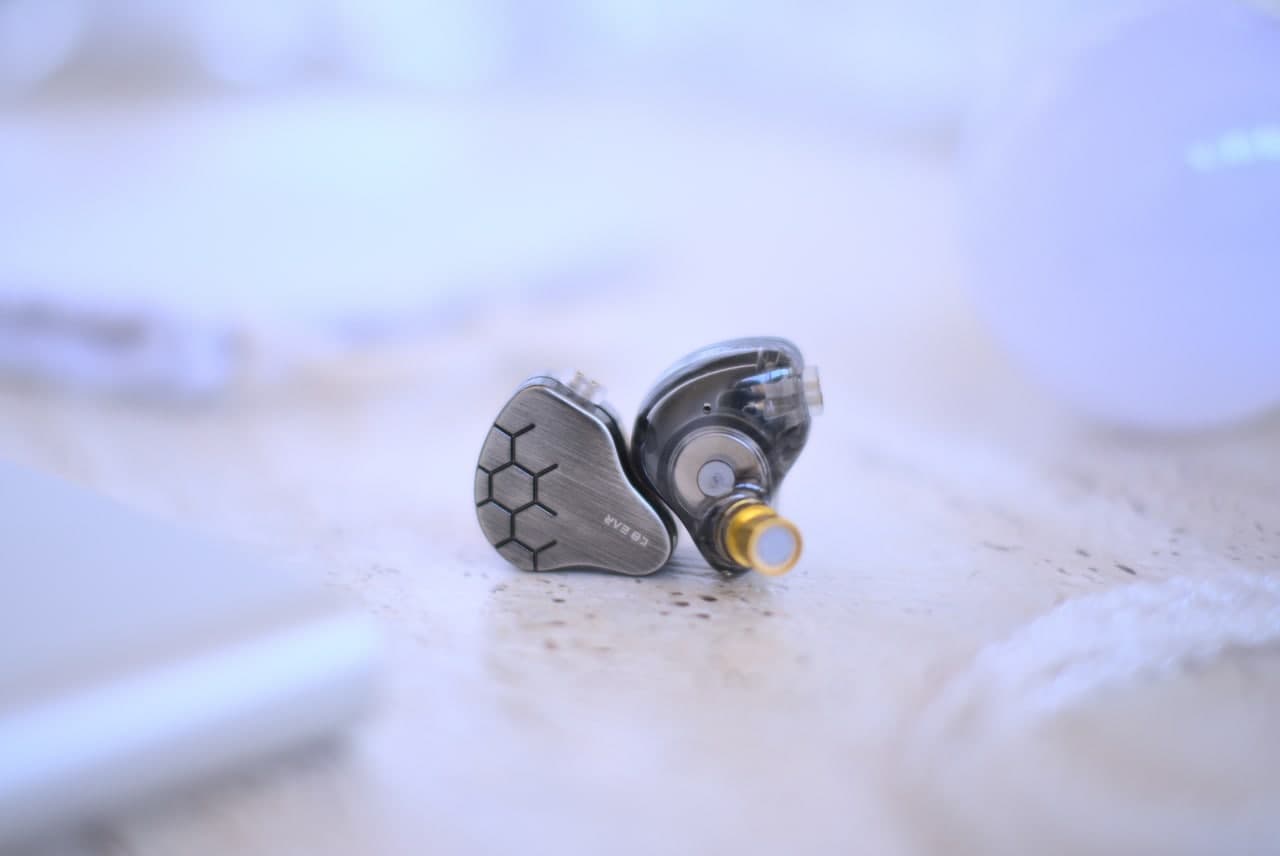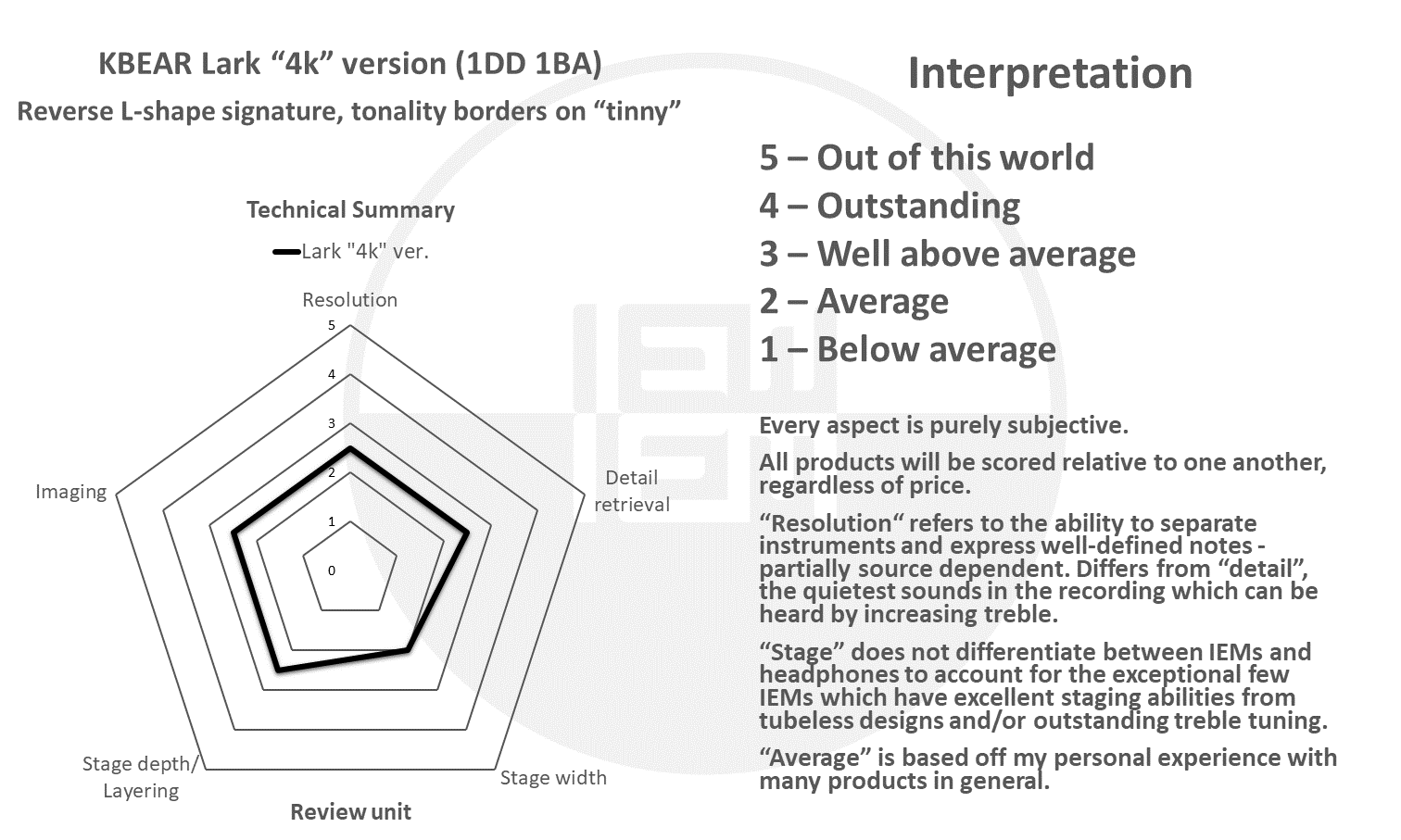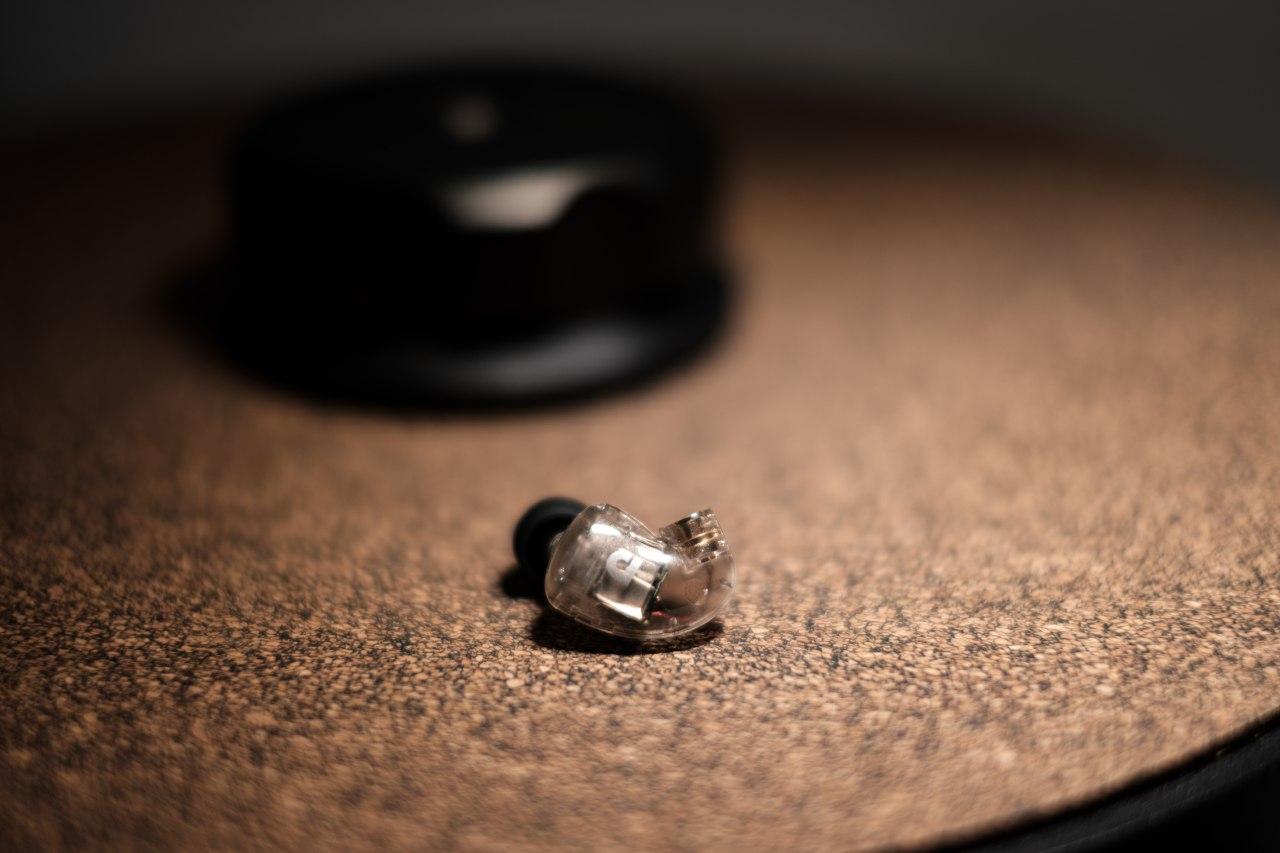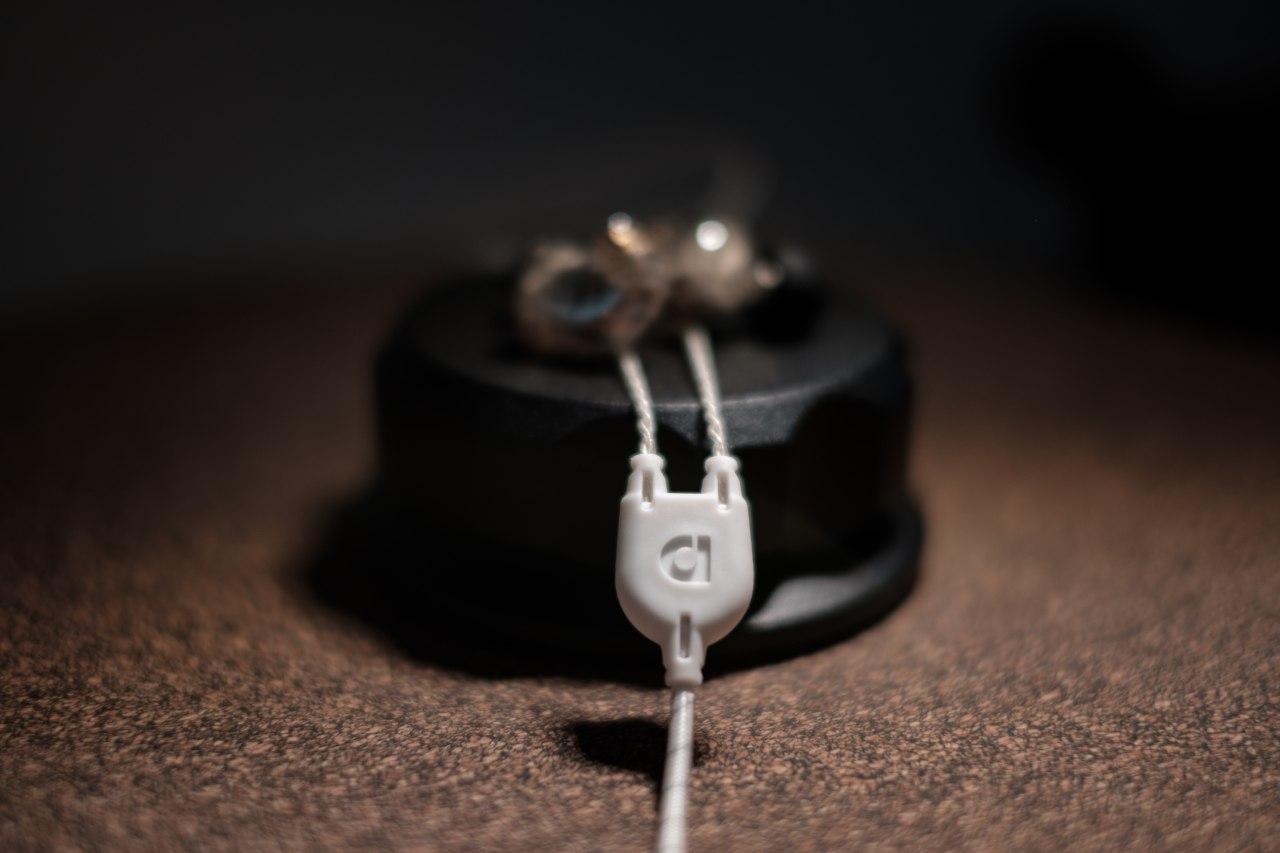Jabra Elite 75t Review - Mini sub-bass cannons
Specifications:
Price - 179.99 USD
Product page
here
Driver - 6mm DD
Weight - 35g charging case, 5.5g each earbud
Frequency response - 20Hz-20kHz (music playback)
Battery - Up to 7.5h with earbuds and 28h including charging case
Charging time - About 2h20min to full charge
Connectivity - Bluetooth 5.0
IP rating - IP55 (resistant against dust and sustained low-pressure water jet spray)
This review can also be found on my hobby
website with more pretty pictures taken by my good friend! You may find more of his works
here.
General thoughts:
The 75t is Jabra's new offering as a follow-up for the popular 65t. The 75t takes a different approach from the 65t's neutral sound, attempting one that gives users a solid kick with their favourite tunes. The shell size and charging case are now much smaller, a more-than-welcome feature I love about it. This review primarily aims to describe the 75t's sound, more so than the other features.
Build, comfort and isolation:
The body shell is made of plastic and is much smaller than its predecessor, the 65t. The titanium black face of the buds is finished with a grainy texture and the body has a smooth matte finish. The build feels alright for what you're paying for and I personally wouldn't mind forking out an extra $20 for the Active version released earlier this year.
The charging case has a smooth matt finish that is pleasant to touch. Jabra has now adopted a magnetic lid which snaps shut on closing. Opening and closing the 75t's charging case is unusually satisfying of all TWS sets I've played around with before. It gives me the same satisfaction as toying with a fidget cube.
The shells are incredibly ergonomic as the ear buds now better replicate the ear anatomy with the curved nozzle simulating the 2nd bend in the ear canal, as compared to straight nozzles seen almost everywhere. The result is a comfortable, secure fit without ear fins/hooks which can cause irritation to the ear cymba. Despite having physical buttons, they are easy to press comfortably. With some other TWS, pressing these buttons can be uncomfortable because the user ends up jamming the ear bud further into the ear when they want to pause or take a call.
Passive noise isolation is average and gets the job done within the realm of UIEMs.
Packaging and accessories:
- Earbuds
- Charging case
- USB-C cable
- S, M & L silicone ear tips ("eargels", as Jabra likes to call it)
Comments on accessories:
I appreciate how the charging case is compact and thin, taking on the thickness of an average wallet. This makes pocketing the tech really handy when going about my daily activities.
Testing procedure:
The 75t was tested with Spotify on my MacBook Pro and Samsung smartphone. I have also tested the 75t with a tone generator to look out for any jarring peaks or dips. While I can never be as precise and accurate as a graphing tool, I use the rough information to rationalise specific sonic qualities which I hear for myself. Take this information with a pinch of salt.
Each【X】is a reference for some of the test tracks used to come to that conclusion. The list of referenced test tracks can be found at the end of this review. This list is not exhaustive, the full pool of test tracks can be found on my
website.
Sound overview:
The 75t has a reverse J-shape response - essentially an imbalanced U-shape response with more emphasis on the sub-bass. Attack transients are a tad slow, and can seem even slower in the presence of the excessive sub-bass boominess.
Sound analysis:
The 75t has a hyper-boosted sub-bass with a spike in the bass response 90Hz and below. This sound might not normally work with average IEMs if we pump the sub-bass up to max on the EQ. However, Jabra manufactured the DD to fit in well with its tuning by giving the 75t DD a good sense of physicality - this makes the sub-bass seismic in nature.
However, little was done to provide grip to the sub-bass, making it woolly. This woolly sub-bass provides plenty of rumble and slam for bass-heavy tunes【1】, but it can lend an odd timbre to the sound. This stems from the fact that there isn't a complementary mid-bass boost.
The sheer imbalance within the bass region, with a hyper-boosted sub-bass and tame mid-bass, can make tracks sound uneven in rock & metal - kick drums give a resounding physical thump but tom-toms and snare drums pale in comparison with a lack of weight【2】. The unevenness is alleviated on playback of tracks with consistent synthetic bass beats【3】and therefore works better with the Pop genre.
Surprisingly, the 75t also manages to sound tinny. This only goes to depict the extent of the mid-bass recession despite the ample dose of sub-bass. The 75t might have been tuned this way to make room for the dominating sub-bass presence and to avoid bass bleeding into the midrange.
As a rough gauge, there is a recession from 90kHz to 200Hz, followed by a slow and gradual climb from 200Hz all the way to 6kHz which could be contributing to its tinny timbre. This also causes the midrange to be on the thin side and border on harshness. Tonal quality takes a hit as vocalists sound as if they are singing from their throat【4】and speedy electric guitars lose their crunch【5】.
In tracks with a ballad before a grand multi-instrumental outro which I can best describe as "calm before the storm"【6】, the 75t makes me want to skip the "calm" and dive right into the "storm". The imbalance discussed earlier can make the 75t go from a dark-sounding set to a bright one, solely dependent on whether the mix contains sub-bass presence. It essentially becomes bright without the sub-bass to mask the upper midrange shout.
On a more positive note, the midrange does "force out" subtle background cues because of its detail-oriented aggressive upper mid boost【7】. Some may enjoy this if they don't mind the midrange features discussed earlier.
The treble of the 75t is characterised by its massive spike from 6kHz to 8kHz, which could be Jabra's attempt at balancing out the sub-bass spike. This brings cymbals and hi-hats forward, but does little to give them shimmer and sparkle. In busy rock or metalcore mixes, crash cymbals can sound splashy【8】.
It should also be noted that the overall resolving ability of the 75t is not particularly fantastic for both midrange【9】and treble. This is especially so for the treble region where it lacks definition in cymbal strikes and hi-hat patterns - this contributes to a splashy background harshness as well【10】.
In other news for technical ability, the 75t has a narrow-sounding headstage, exacerbated by its thin midrange. However, the woolly sub-bass can help alleviate this depending on the quantities of sub-bass present during playback. The 75t doesn't do much for separation or imaging. Sonic cues are projected upon a narrow 2-dimensional wall of sound with little depth to it. Subtle background details become audible but aren't placed in a discernible location within its narrow headstage.
When left on
"neutral", it sounds as if somebody already cranked up the sub-bass on the EQ and left it as that. We will now discuss each EQ pre-set in brief.
Speech: Sub-bass presence is the most tame in this setting. Thin and hard sounding vocals described earlier now dominate the mix.
Bass Boost: Amplifies the already excessive sub-bass bloom and rumble. Helps drown out any abrasiveness in the upper mids and treble for a smoother playback.
Treble Boost: The most "balanced" signature the 75t has to offer. Be warned that listener fatigue may set in quickly. For me at least.
Smooth: Begins to imitate a more traditional V-shaped sound signature. Becomes smoother relative to its original sound but is still distinctly 75t sound, which is, not smooth.
Energize: Similar to "neutral" but with vocals pushed even further back.
Who is this for?
Unique tunings, while interesting, can be polarizing.
The 75t is not for those who:
- Don't want another earbud that has a midrange which borders on shoutiness (varies between listeners depending on their tolerance)
- Want a TWS with an organic musical playback with their multi-genre library (vocalists can sound as if singing from their throat, etc…)
But the 75t may fit the bill for those who:
- Want gobs of skull-rattling (sub) bass for the kicks, especially at the gym
- Appreciate a tactile bass response - this is what makes the 75t's overly-bassy tuning work
- Don't mind the unusual sub-bass spike for a different take on their music
- Have a library which involves heavy rotation among synthetic "future bass" Pop or EDM. (Marshmello, Gryffin, Illenium, Seven Lions, The Chainsmokers, etc…)
- Want something convenient and comfortable for their daily commute. The ergonomic earbud housing and compact charging case fit into my daily life with ease.
Would I change anything about it?
With the available EQ presets, I don't find myself wanting the original tuning to be tweaked. I most often find myself rotating between "bass boost" and "treble boost" ("bass boost" for workouts and "treble boost" for short mundane tasks such as folding laundry).
Concluding thoughts:
If this sounds like something you'd like to have on top of your primary reference gear, you might be happy to hear that the other features of the 75t are very well done. The Jabra Sound+ app offers users other features:
- A transparency mode, "HearThrough", that gets the job done
- Soundscapes such as "white noise", "ventilation fan", "ocean waves", "rainy day", "crowd", etc…
- Multi-device connection. It spares me the trouble of configuring the earbuds for use between my laptop and phone.
The asking price offers the consumer a fun, unusual playback with the convenience of TWS. The other features may merely be a gimmick for some but I do find them useful. Its unique playback is genre-specific which makes it one of those earbuds I'd wear to enjoy self-curated playlists containing songs which don't reveal the 75t's bass imbalance - mainly synthetic "future bass" pop. I don't often play acoustic on these as it can sound "naked" without the sub-bass to carry the sound.
The 75t's seismic sub-bass is one that I've grown addicted to in the gym. It is clearly geared towards bassheads who can appreciate its odd flavour and those who need a kick in their tunes.
Test tracks for reference:
Artiste 1 –
Song 1, Song 2.
Artiste 2 –
Song 1…
- The Glitch Mob - Aminus Vox, We Can Make The World Stop, Come Closer. Billie Eilish - bury a friend, bad guy, you should see me in a crown. The Weeknd - Starboy, Six Feet Under.
- All Time Low - Favourite Place, Cinderblock Garden, Summer Daze. Solence - Paralyzed. Bring Me The Horizon - Sleepwalking, Shadow Moses.
- Josie Dunne - Old School, Ohh La La, Same. The Weeknd - Blinding Lights, I Feel It Coming, True Colours. Halsey - Colours, Roman Holiday, 100 Letters. Aimer - ONE, 3min, Monochrome Syndrome.
- Andrea Bocelli - Vivere. Of Monsters And Men - Wild Roses, Stuck In Gravity. Andrew Lloyd Webber - The Music Of The Night, 'Til I Hear You Sing, Memory, Any Dream Will Do. Aimer - Marie, Choucho Musubi, Rokutouseino Yoru. Radwimps - tazuna, Is There Still Anything That Love Can Do?, Confession. Coldrain - JANUARY 1ST. The Fray - You Found Me. Daughtry - What About Now, No Surprise.
- My Chemical Romance - Welcome to the Black Parade, Famous Last Words, Thank You for the Venom. M83 - Go!. MY FIRST STORY - Mukoku, LET IT DIE, REVIVER, 2 FACE, ALONE.
- Falling In Reverse - The Drug In Me Is Reimagined. MY FIRST STORY - Love Letter, Last Kiss, Kimi no Uta. Radwimps - Mountain Top, Breath, Hari to Toge.
- MY FIRST STORY - Mukoku, LET IT DIE. LiSA - Gurenge, ADAMAS, Ash. Sawano Hiroyuki - Binary Star, Tranquility, Trollz, narrative.
- Coldrain - ENVY, F.T.T.T, SPEAK, ANSWER / SICKNESS, LI(E)FE. Crystal Lake - +81, Lost in Forever, Devilcry, Apollo, Sanctuary. Bring Me The Horizon - Sleepwalking, Shadow Moses, Avalanche.
- Bring Me The Horizon - Drown, Oh No, mother tongue, Happy Song. ONE OK ROCK - Wasted Nights, Take What You Want, We Are, Decision. Sawano Hiroyuki - REMEMBER, i-mage, View. MY FIRST STORY - REMEMBER, REVIVER, Monologue + Kyogen Neurose (Orchestra Ver.). Radwimps - 万歳千唱, 正解 (18FES ver.).
- Royal Blood - Little Monster, Hook Line & Sinker, Out of the Black, Figure It Out. ONE OK ROCK - Cry Out, Taking Off, The Beginning, Mikansei koukyoukyoku. MY FIRST STORY - WINNER, Home, Fukagyaku Replace, MONSTER.























































such cool branding, with everything matching their logo...love it.